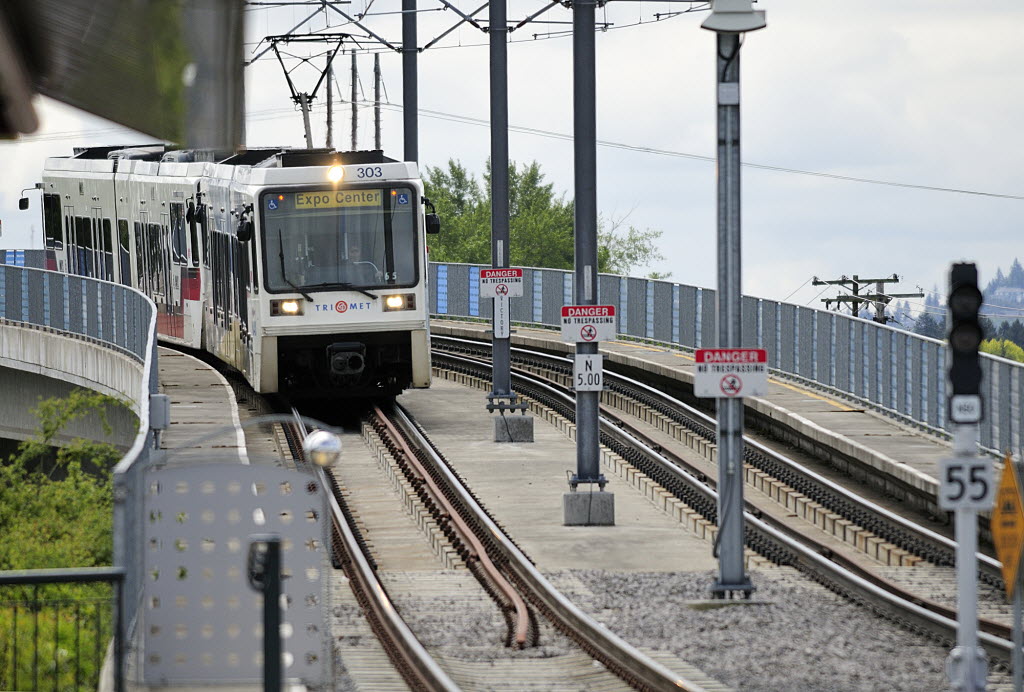A day after voters rejected a sales tax increase to help pay for light rail, at least one group offered its answer to an inevitable question.
Now what?
A small task force led by Identity Clark County and the Greater Vancouver Chamber of Commerce on Wednesday sent C-Tran leaders what it believes is a viable Plan B. The proposal combines several alternative funding sources to cover the annual operations cost of light rail in Vancouver, planned as part of the Columbia River Crossing.
Identity Clark County and the chamber both back the CRC, but didn’t support a sales tax hike for light rail. They spent recent weeks crafting a different way to cover the estimated $2 million to $2.7 million annual tab to operate the system in Vancouver. The group hopes to keep the CRC project moving forward, said Identity Clark County president Paul Montague.
“This project’s success or failure will drive the economic future of Clark County,” Montague said.
Of course, not everyone shares that view — among the 56.5 percent of voters who said no to C-Tran’s Proposition 1 as of Wednesday were many CRC opponents. And the measure’s failure may create bigger problems for the $3.5 billion project than a simple footnote in its finance plan.
“Even though this is but one small piece, it’s clearly … a critical piece,” said Portland economist and CRC critic Joe Cortright.
The CRC must have a local finance plan in place for operating light rail before it can secure federal money to build the system. At the very least, that creates a scheduling issue for a project that hopes to start major construction in late 2014, Cortright said — particularly if the local funding plan requires another public vote.
The finance plan sent to C-Tran leaders Wednesday uses eight revenue sources to collect at least $2.9 million in 2019, according to the task force’s analysis. The biggest of those sources — reallocating savings from no longer sending bus routes No. 4 and No. 44 across the Columbia River — accounts for about $1.2 million, according to the group. Other sources include charging for use of CRC park and ride facilities, a “windfall” of extra sales tax revenue from CRC construction, and a fare surcharge on light rail, or “light rail toll.”
Most of those sources are driven by the CRC itself, Montague said. He noted that keeps costs tied to actual usage of the project that would replace the Interstate 5 Bridge, extend light rail into downtown and rebuild the freeway on both sides of the Columbia River.
“The idea is to get it to pay for itself,” Montague said of the light-rail operations cost.
Some aspects of that plan would mean a reversal of C-Tran board policy. In the run-up to last year’s ballot measure for bus service, board members pledged that none of its sales tax revenue would go toward light rail or the CRC. The board has also said a public vote would happen before C-Tran signs off on light rail in Vancouver, though some C-Tran leaders have suggested that may not be a requirement for an alternative local funding plan. Not everyone agrees.
The full C-Tran board will tackle those questions in the coming months, said Vancouver City Council member Larry Smith, the board’s chairman. C-Tran has already committed to the CRC, he said, and needs to find another way to carry the project forward. The funding options sent Wednesday are a good opportunity to continue that discussion, he said.
“Those need to be fleshed out a little bit more to see what’s realistic at this point,” Smith said. “For me, everything is on the table.”
C-Tran leaders are likely to continue to hear from CRC opponents who viewed this year’s Proposition 1 as their chance to have a say on light rail, raising their voice against the project itself.
Cortright said Tuesday was the first time anyone has voted directly on spending money toward the CRC. He dismissed the notion that the measure failed due to an anti-tax sentiment. Just last year, voters gave C-Tran a sales tax increase that was twice as large — in an economy that was just as bad, if not worse — for basic bus service, Cortright said.
“It’s very clear that the difference between the two measures was that this involved the CRC,” he said.




